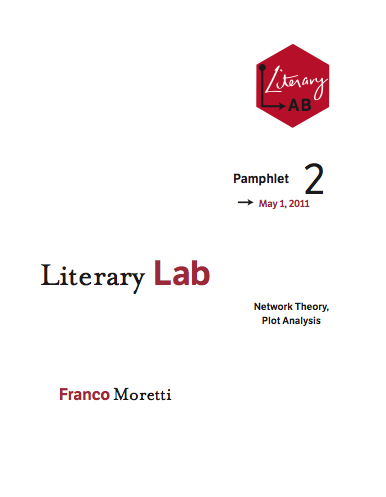Part 2: Author Networks in the Marsden Magazines
In part 1, I suggested that in order to really get a handle on The Egoist or even an article published in it, we should attend to the social nature of the magazine, which entails more than reading, for what the act of reading misses is some of the other work magazines do, namely, creating networks of authors, texts, media, readers, ideas, genres, and practices. While we might no longer be able to appreciate the size and feel of the paper The New Freewoman was printed on when we look at it on-screen, the data that the Modernist Journals Project and similar sites generate in the process of digitizing magazines provide the raw materials for visualizing and analyzing components of magazines that cannot be immediately grasped by looking at a single issue but which are as material as the page layout of a magazine and as essential, if not more so, to defining a magazine’s character. I am talking about the kinds of aggregate qualities Mark just ran through as well as networks of authors who appear together in the same issue and across many issues. The big idea I’m exploring in my work these days is that it is out of these networks, created in the pages of magazines much as networks are made today on Twitter and Facebook, that people in the Teens, Twenties, and Thirties formed their ideas of what modernism was.
I am far from being the first person to talk about the significance of networks in modernism. Indeed, network has become a favorite metaphor in literary studies of late, for the concept resonates with the discipline’s shift away from an author-centered literary criticism toward one interested in the collaborative and social contexts of production, circulation, and consumption. Consider these passages:
What you won’t find in these or the vast majority of works of criticism that claim modernism was a particularly networked phenomenon is any consideration of the actual networks of modernism, and you certainly won’t find any network analysis. Too often, however, a metaphor is all we get
But then what is network analysis?
A network is a structure of relationships among entities. These entities, or nodes, are linked along edges, which represent some form of relationship. You could, for instance, create a network of swine flu virus sufferers who were linked by passing the infection on or a network of friends on Facebook. Network analysis graphs these relationships in order to perform a holistic analysis of the structure. Here is one kind of network that existed within the Bloomsbury Group.
Can you guess what the connections are? I have relied on a cursory survey of Internet sources for my data, and I’m sure that there are people who are much more knowledgeable about the sexual life of Bloomsbury, so please let me know about my errors. But how to read the graph? Continue reading








New Book on Transnational Modernism in a Periodical Context
One of the least tapped into but most exciting aspects periodicals studies can play in literary history is the power of the magazine to create links across national literatures. Modernist studies has been talking about transnational turn for the past decade, but transnationalism remains better theorized than actualized, which is why it’s so exciting to see that Gayle Rogers’ Modernism and the New Spain: Britain, Cosmopolitan Europe, and Literary History (Oxford University Press) is available now. Rogers draws heavily on modernist magazines like The Criterion and the Revista de Occidente in order to uncover a long obscured history of collaboration that contributed to the mutual constitution of modernism in Spain and Britain.
Modernism and the New Spain: Britain, Cosmopolitan Europe, and Literary History (Oxford University Press) is available now. Rogers draws heavily on modernist magazines like The Criterion and the Revista de Occidente in order to uncover a long obscured history of collaboration that contributed to the mutual constitution of modernism in Spain and Britain.
Leave a comment
Posted in Commentary, Publications
Tagged criterion, de, gayle rogers, magazines, Occidente, Revista, spain, transnationalism